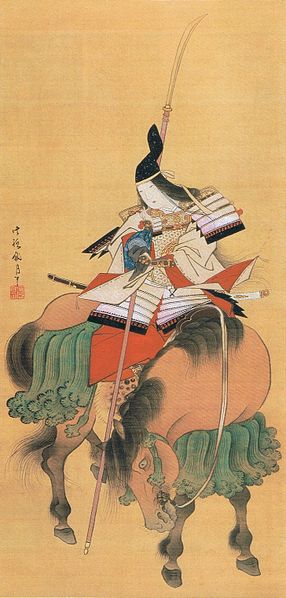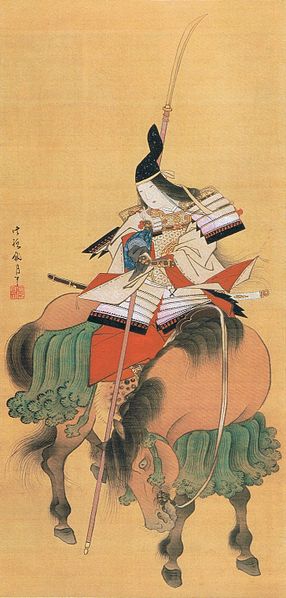
The Brave Onna-bugeisha
Onna-bugeisha (女武芸者) were Japanese women warriors who came from the Japanese upper class. They were widows, wives, daughters, and some were even rebels. They answered to the call of duty and courageously fought in battle alongside the samurai men. They were skillfully trained in martial arts and wielded weapons such as the naginata (a wooden shaft with a curved blade on the end) and the kaiken (an 8-10 inch long, single or double bladed dagger). During the early Heian and Kamakura periods, prominent women in the battlefields eventually went on to lead their own clans. These brave women used their skills to bring about economic and social change, and even today, their stories continue to inspire us with their honor, courage, and valor.
Some of the onna-bugeisha throughout history:
“Great Japan (Dai-Nihon) History Briefing Session, the 15th Empress Jingu.” Empress Jingu setting foot in Korea.
Empress Consort Jingū (神功皇后 Jingū-kōgō)–also known as Empress Regent Jingū (神功天皇 Jingū-tennō). This Japanese empress ruled from her husband’s death in the year 201 until her son Emperor Ōjin ascended to the throne in 269. Prior to the Meiji period, she was considered the 15th sovereign until the re-evaluation of the extant historical records caused her name to be removed from that list, making her son Emperor Ōjin the 15th Japanese imperial ruler. According to the Nihon Shoki, Empress Consort Jingū led an army in an invasion of Korea and returned to Japan victorious after three years. Her misasagi (tomb) can be visited at Misasagi-chō in Nara.
Nakano Takeko (中野 竹子, 1847 – 1868)–a prominent female warrior of the Aizu domain who fought and gave her life during the Boshin War (a civil war in Japan from 1868 to 1869 between the ruling forces of the Tokugawa Shogunate and those seeking to return political power to the imperial court).
Nanako Takeko was born in Edo to Nakano Heinai, an Aizu official. She was well trained in literature and martial arts. Later on, her martial arts instructor, Akaoka Daisuke, adopted her. She then joined the Battle of Aizu 1868 and fought with a naginata. She led an ad hoc corps of female warriors who fought independently because senior Aizu retainers did not allow them to fight as an official part of the domain’s army.

Their unit was later called the Women’s Army (娘子隊 Jōshitai). She sustained a bullet to the chest and rather than let her head be taken by the enemy as a trophy, she asked her sister Yūko to cut it off and bury it. Her head was taken to Hōkai-ji Temple (Aizubange, Fukushima) and was buried under a pine tree where a monument for her was erected.
Tomoe Gozen (巴 御前, 1157?–1247)–a 12th-century female samurai warrior. She was the concubine of Minamoto no Yoshinaka (1154 – 1184, a general of the late Heian Period). She fought in and survived the Genpei War (1180-1185) where she was recognized for her strength and bravery.

